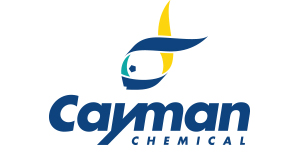RAGE (human, recombinant)
RAGE (human, recombinant)
SKU
CAY38057-1
Packaging Unit
1 mg
Manufacturer
Cayman Chemical
Availability:
loading...
Price is loading...
Formulation: Lyophilized from sterile PBS, pH 7.4
Purity: ≥98% estimated by SDS-PAGE
Shelf life (days): 365
Notes: Receptor for advanced glycation end products (RAGE) is a transmembrane protein and member of the IgG superfamily.{69274} It is composed of one V-type domain that is responsible for extracellular ligand binding, two C-type domains, a transmembrane domain, and a cytosolic tail involved in intracellular signaling. In addition to full-length and membrane-bound forms, soluble forms of RAGE can be formed either by proteolytic cleavage or alternative splicing. It is highly expressed in the mature lung pneumocytes and embryonic cells and is expressed at lower levels in many other cell types. RAGE has a variety of ligands that share a common structural motif, including AGEs, high mobility group box 1 (HMGB1), certain S100 proteins, and amyloid-β peptide fibrils.{69275} Ligand activation of RAGE induces binding of the cytoplasmic tail to bridge proteins, such as diaphanous-related formin 1 (DIAPH1) and myeloid differentiation factor 88 adapter-like protein (Mal), which then activate MEK/ERK, PI3K/Akt, and JAK/STAT signaling pathways, among others, and lead to activation of NF-κB. RAGE levels increase rapidly at sites of inflammation, and full-length RAGE is associated with a pro-inflammatory state.{69274,69275} Protein levels of RAGE are increased in postmortem coronary atherosclerotic lesions from patients with diabetes who died from sudden cardiovascular complications.{69276,69277} However, plasma levels of soluble RAGE are lower in non-diabetic men with coronary artery disease (CAD) than those without CAD.{69278,69277} Levels of full-length RAGE are decreased in non-small cell lung carcinoma (NSCLC) tissue compared with non-cancerous lung tissue, and proliferation of lung cancer cells overexpressing RAGE is reduced in vitro.{69279} Cayman’s RAGE (human, recombinant) protein can be used for binding assays. This protein consists of 332 amino acids, has a calculated molecular weight of 35.5 kDa, and a predicted N-terminus of Ala23 after signal peptide cleavage. By SDS-PAGE, under reducing conditions, the apparent molecular mass of the protein is 47-53 kDa due to glycosylation.
Purity: ≥98% estimated by SDS-PAGE
Shelf life (days): 365
Notes: Receptor for advanced glycation end products (RAGE) is a transmembrane protein and member of the IgG superfamily.{69274} It is composed of one V-type domain that is responsible for extracellular ligand binding, two C-type domains, a transmembrane domain, and a cytosolic tail involved in intracellular signaling. In addition to full-length and membrane-bound forms, soluble forms of RAGE can be formed either by proteolytic cleavage or alternative splicing. It is highly expressed in the mature lung pneumocytes and embryonic cells and is expressed at lower levels in many other cell types. RAGE has a variety of ligands that share a common structural motif, including AGEs, high mobility group box 1 (HMGB1), certain S100 proteins, and amyloid-β peptide fibrils.{69275} Ligand activation of RAGE induces binding of the cytoplasmic tail to bridge proteins, such as diaphanous-related formin 1 (DIAPH1) and myeloid differentiation factor 88 adapter-like protein (Mal), which then activate MEK/ERK, PI3K/Akt, and JAK/STAT signaling pathways, among others, and lead to activation of NF-κB. RAGE levels increase rapidly at sites of inflammation, and full-length RAGE is associated with a pro-inflammatory state.{69274,69275} Protein levels of RAGE are increased in postmortem coronary atherosclerotic lesions from patients with diabetes who died from sudden cardiovascular complications.{69276,69277} However, plasma levels of soluble RAGE are lower in non-diabetic men with coronary artery disease (CAD) than those without CAD.{69278,69277} Levels of full-length RAGE are decreased in non-small cell lung carcinoma (NSCLC) tissue compared with non-cancerous lung tissue, and proliferation of lung cancer cells overexpressing RAGE is reduced in vitro.{69279} Cayman’s RAGE (human, recombinant) protein can be used for binding assays. This protein consists of 332 amino acids, has a calculated molecular weight of 35.5 kDa, and a predicted N-terminus of Ala23 after signal peptide cleavage. By SDS-PAGE, under reducing conditions, the apparent molecular mass of the protein is 47-53 kDa due to glycosylation.
| SKU | CAY38057-1 |
|---|---|
| Manufacturer | Cayman Chemical |
| Manufacturer SKU | 38057-1 |
| Green Labware | No |
| Package Unit | 1 mg |
| Quantity Unit | STK |
| Product information (PDF) | Download |
| MSDS (PDF) |
|

 Deutsch
Deutsch







